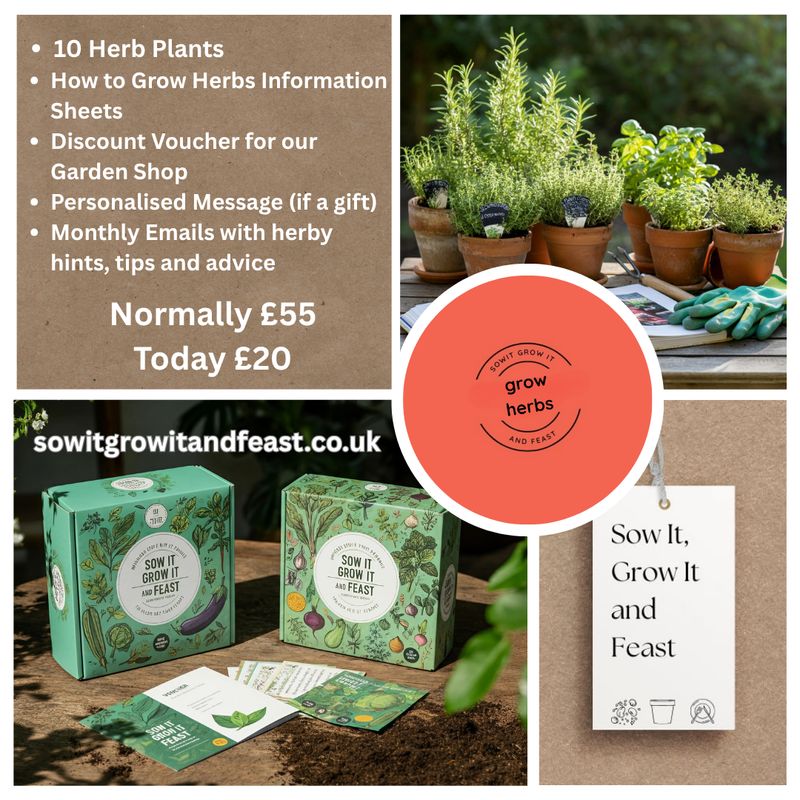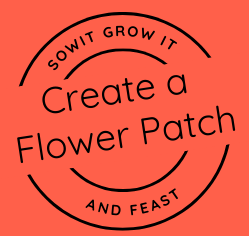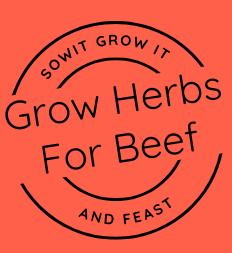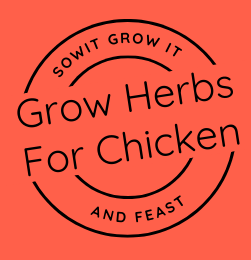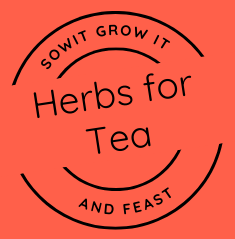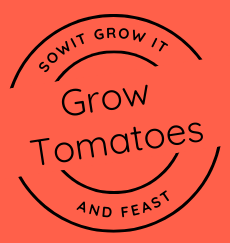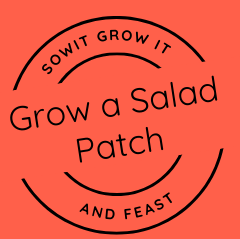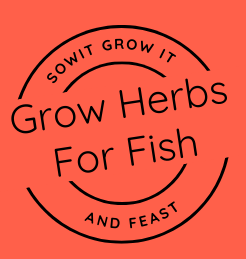Gardeners and home cooks alike often find themselves in the midst of a pepper-based predicament: which chilli plants should they sow, grow, and ultimately harvest for that perfect zing in their culinary creations? With chilli plants offering an abundance of varieties—each with its own unique heat level, flavour profile, and growth requirements—selecting the right one can be as daunting as it is exciting.
Which Chilli Plants to Sow
In the chilly climes of the UK, planning your chilli sowing is crucial. Typically, chilli seeds are best sown indoors from late winter to early spring.
What to Consider When Choosing Your Chilli Seeds
The choice of your chilli companion is an intimate process, one where you’re meant to ponder over multiple factors that impact not just the growing experience, but the eventual flavour and heat of the chillies.
Heat Levels and Scoville Scale
The heat of a chilli is measured in Scoville Heat Units (SHU). For reference, bell peppers sit at a blissful zero SHU, and the Carolina Reaper, notorious for causing tears, comes in well over a million. Choosing the right heat level is essential, especially if you’re a newcomer to the wondrous world of chillies.
Flavour and Use
Chilli peppers aren’t all about the burn. Varied flavours, from fruity and tangy to smoky and sweet, are abundant within the chilli spectrum. Consider the intended use of your chillies, keeping in mind that not all need to sear your taste buds; milder varieties can elevate dishes with their nuanced tastes.
Growth Habit and Yield
Some chilli plants are compact and bushy, like the Thai Chilli, ideal for window sills or small gardens. Others, like the Red Savina, are more sprawling and require ample space. Yield is another significant factor. If you’re churning out hot sauces, you’ll want a high-yield plant such as the Jalapeño; however, if you’re looking for ornamental appeal, a lower yield isn’t a deterrent.
Climate and Light Requirements
Ensure your chosen spot for chilli planting receives ample sunlight, as it directly impacts the plant’s fruiting and ripening.
Disease Resistance
Certain varieties are more resistant to pests and diseases, which may be advantageous if you want an easier, less-interventionist growth experience.
Open-Pollinated vs. Hybrid Seeds
Open-pollinated (OP) seeds are pollinated by bees or the wind, resulting in plants that are similar to the parent and suitable for seed saving. Hybrid seeds, a result of controlled cross-pollination, often exhibit enhanced characteristics like disease resistance or yield but do not maintain those traits when saved.
Organic vs. Conventional Seeds
Choosing organic seeds can align with an eco-friendly gardening ethos, and they’re typically free from synthetic chemicals.
Growing the Perfect Chilli Plants: Tips and Tricks
Growing chilli plants successfully comes down to knowledge, patience, and a little green-fingered finesse. Here’s how to provide an environment where your chillies can thrive.
Starting Indoors or Outdoors
In the UK, starting chilli seeds indoors offers them the warmth and protection they need to germinate and develop.
Soil and Fertilisation
Well-draining, nutrient-rich soil is non-negotiable. Regular fertilisation, especially when the plants start flowering, can significantly bolster your plant’s health and harvest.
Watering and Humidity
Chillis require consistent moisture but can be finicky about overwatering, which can lead to root rot. Keeping the soil consistently damp, not soaking, and maintaining moderate humidity is key.
Temperature and Sunlight
Temperature control, particularly for nurturing seeds, is pivotal. A balance between warmth and sun, especially for heat-dependent germination, is key. Once your plants are established, a sunny windowsill or greenhouse will provide the light they need.
Pruning and Shaping
Pruning your chilli plants encourages growth and a more robust yield. Pinching off growing tips can promote bushier plants and more fruit production.
Pests and Diseases
Regular checks for aphids, whiteflies, and other pests can prevent infestations. Using natural or organic remedies, like neem oil, can deter pests without introducing harmful chemicals to your plants.
Support and Staking
Some chilli varieties, particularly those with larger fruits, will need support as they grow. Individual stakes or cages can keep plants upright and healthy.
The Best Chilli Varieties for Home Cooking
Culinary exploration with chillies can be as exciting as it is delectable. Here are a few commendable varieties that are beloved for their versatility in the kitchen.
Jalapeño
Arguably the most recognisable, the jalapeño offers a moderate heat level and a characteristic deep green colour. It’s superb for spicing up salsas or stuffing for a hearty appetiser.
Thai Chilli
This small, red-hot pepper packs a punch. It’s an integral part of Thai cuisine, essential for the perfect Pad Krapow or Tom Yum.
Poblano
A mild, earthy pepper used for making chilli rellenos, or dried and ground into the popular Ancho chilli powder.
Habanero
For those that dare, the habanero brings the heat and a hint of fruity flavour. A little goes a long way, whether pureed into a sauce or diced into a mango salsa.
Scotch Bonnet
Similar to the habanero, Scotch bonnets have a sweeter note. They’re a staple in Caribbean dishes, contributing to the complex flavours of jerk chicken or pepperpot soup.
Cayenne
With a long, slender fruit, the cayenne is perfect for drying and grinding to create a powerfully piquant seasoning that adds a kick to any dish, from stews to chocolate.
Common Chilli Growing Mistakes to Avoid
The path to perfect chillies is lined with potential slip-ups. Here are common mistakes you can avert with a touch of foresight and care.
Overwatering
Too much love can be harmful. Overwatering can lead to root rot and other waterborne illnesses. Allow the soil to dry out between watering to avoid this pitfall.
Under-fertilising
Chilli plants are heavy feeders, especially once they start flowering. A lack of nutrients can result in stunted growth and a less prolific harvest.
Ignoring Pollination Needs
If your indoor plants aren’t fruiting, they might need a helping hand with pollination. Don’t disregard this step, or your yield might suffer.
Pruning at the Wrong Time
Pruning too early can stunt your plant’s initial growth. Wait until your plant has developed its second set of leaves before starting this process.
Extreme Temperature Fluctuations
Chillies like it stable. Don’t subject them to extreme temperature variations, as this can shock the plant and impede its development.
Selecting the right chilli plants for your garden and plate is a deliberate act of horticultural matchmaking. By contemplating heat levels, growth habits, and cooking capabilities, and by providing the right environment for your plants, you prepare for a crescendo of colourful, capsicum-centric delights.
Whether you’re cultivating a windowsill garden or orchestrating a chilli growing operation in your greehouse, the experience of selecting, sowing, growing, and consuming your chillies is a truly rewarding and, for the more adventurous growers, an occasionally explosive, process. The chilli you choose to cherish becomes more than mere flora – it’s a taste-bearing extension of your identity as a gardener and a cook. May your peppers be plentiful, your harvests bountiful, and your culinary creations absolutely scorching.

If you’re a spice lover, you’ve probably felt the fiery heat of a chilli. Whether it’s the satisfying tingle on your tongue or the beads of sweat forming on your forehead, chillies are undeniably exciting. But have you ever wondered what makes them so spicy? What’s the science behind that irresistible kick? Let’s peel back the layers of this fascinating fruit (yes, chillies are technically fruits!) and explore what sets your taste buds alight.
What is it about chillies?
Chillies derive their heat from a compound called capsaicin, which is predominantly found in the white membranes holding the seeds rather than the seeds themselves. Capsaicin is a natural defence mechanism for the plant—while mammals, including us, find it spicy, birds are immune to the heat, allowing them to eat chillies and disperse the seeds far and wide. Clever, right?
Not all chillies are created equal, though. The heat level of a chilli is measured on the Scoville Scale, ranging from mild bell peppers to the tear-jerking Carolina Reaper. Capsaicin tricks your brain into believing your mouth is on fire, triggering a unique sensory experience.
Why are chillies good for us?
Beyond their fiery charm, chillies pack a ton of health benefits. Capsaicin is celebrated for its anti-inflammatory and pain-relieving properties. It also boosts metabolism, making it a popular choice for those looking to spice up their meals and their fitness goals.
Research has shown that diets rich in spicy foods may improve heart health, reduce cholesterol, and even extend your lifespan. Chillies are also loaded with essential vitamins like Vitamin C and Vitamin A, keeping your immune system in top shape. It’s not just about the kick—it’s about kicking your health up a notch too!
The Burning Sensation – What’s Really Happening?
If you’ve ever eaten a fiery chilli and felt like your mouth was under attack, you’re not alone. Capsaicin binds to receptors in your mouth called TRPV1 receptors, which are responsible for detecting heat and pain. The result? Your brain thinks your tongue and lips are literally burning, even though no physical harm is being done.
But it doesn’t stop there. Capsaicin doesn’t just stay in your mouth—it can trigger a whole-body response. You might experience stinging lips, watery eyes, a runny nose and even a sweat-drenched forehead. These are all symptoms of your body trying to cool itself down from what it perceives as a “threat”. It’s biological drama at its finest.
Why Does Our Body React Like This?
Your body’s reaction to chillies is a primal defence mechanism. When capsaicin hits your TRPV1 receptors, your brain sends out warning signals. Adrenaline is released into your system, dilating blood vessels and kicking your sweat glands into overdrive.
But there’s good news for spice lovers—this chilli-induced chaos also triggers a release of endorphins and dopamine, your body’s “happy” chemicals. This is why some people find eating spicy food addictive; you’re chasing that euphoric, adrenaline-fuelled high.
How to Overcome the Heat
Got a little too ambitious with your chilli intake? Don’t worry—we’ve got you covered with these foolproof remedies to tame the spice!
- Dairy to the Rescue
Capsaicin is oil-based and water won’t wash it away. Instead, reach for a glass of milk, a dollop of yoghurt or even some cheese. The protein casein in dairy binds to capsaicin molecules, helping you cool down.
- Bread or Rice
Starches like bread, rice or crackers can absorb some of the capsaicin, taking the heat off your tongue. Plus, a bite of bread is a far gentler way to recover than frantically chugging water!
- Sweet Relief
Sugar and honey can help counteract the fiery attack by offering a sweet contrast to capsaicin’s heat. Drizzle some honey or munch on a sugar cube for quick relief.
- Acidic Foods
Squeeze a bit of lemon or lime juice onto your tongue. The acidity helps neutralise capsicum oil and dials down the burn.
- Know Your Limits
If you’re still building up your spice tolerance, start small. Work your way up the Scoville Scale as your taste buds acclimate to the heat.
Chillies—More Than Just Heat
Love them or fear them, chillies are more than just a fiery thrill. They hold a fascinating blend of science, health benefits and culinary possibilities. Next time you dice up a fiery jalapeño or sprinkle a pinch of cayenne into your dish, remember you’re not just spicing up your meal—you’re indulging in a botanical marvel.
Inspired to experiment with your own chilli plants? Why not try growing them yourself? Not only will you get the freshest heat possible, but you’ll also gain a deeper appreciation for these fiery fruits. Happy cooking, and more importantly—happy spicing!
Grow Chillies with SowItGrowItandFeast!
Further Reading: Spicy Evolution: A Dive into Chilli’s History 🌶️, Troubleshooting Chilli Problems








